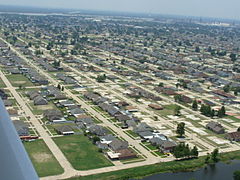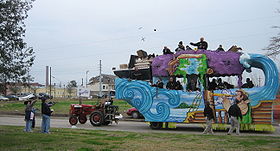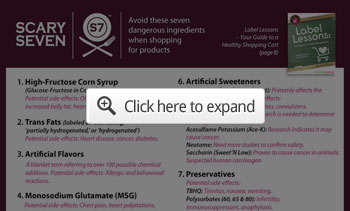Interesting and unexpected
facts can emerge from daily news stories and the Magazine picks out
such snippets for its weekly feature, 10 things we didn't know last
week. Here's an almanac of the best of 2013.
1. It would have taken 2.5 million seagulls to lift James's giant peach into the air, not the 501 that Roald Dahl suggested.
2. Hot drinks taste different according to the cup colour.
3. It's easier to pick wet things up with wrinkled fingers - suggesting an evolutionary reason for getting "prune fingers" in the bath.
4. There are two firms in the world cloning polo ponies.
5. Two per cent of Europeans lack the genes for smelly armpits
6. Horse-eating is called Hippophagy.
7. "Russian flu" got its name because of the Cold War rather than because it originated in Russia.
8. Women look their oldest every Wednesday at 3.30pm.
9. Prince Charles did not use the London Underground between 1986 and 2013.
10. The House of Lords has a rifle range.
11. Wines with animals on the label are known as "critter wines" in the US.
12. Female hawksbill turtles can store sperm for 75 days.
13. Fidgeting is good for men's concentration but bad for women's.
14. Workers at Amazon's warehouse in Rugeley walk past a life-sized cardboard image of a blonde woman who says: "This is the best job I have ever had!"
15. William is the surname that has decreased the most since 1901.
16. 1980's pop star Glenn Medeiros is the vice principal of a high school in Hawaii.
17. Haribos are so-named because of founder Hans Riegel and his hometown Bonn.
18. Drone operators experience post-traumatic stress at the same rate as combat pilots.
19. Nigel Farage writes a column for Total Sea Fishing magazine.
20. Monkeys avoid selfish people.
21. "Aunt" is the most popular pornographic search term in Syria.
22. Plants lace their nectar with caffeine to keep pollinators loyal.
23. South Korean media often refer to national politicians using only their initials.
24. Sarah Greene used to bite Peter Duncan's ankles to distract him during Blue Peter cookery demos.
25. South Africa was included in the BRICS as it made for a better acronym than Nigeria.
26. There are more deer in the UK now than at any time since the last Ice Age.
27. Some Norwegians feel strongly about whether firewood is stacked bark up or bark down.
28. Tears do not fall in space.
29. Steve Jobs and Steve Wozniak belonged to a group of hackers and hobbyists called the Homebrew Computer Club.
30. At a Swedish dinner party you should never fold your napkin and put it on the table before the hostess has done so.
31. Bill Bailey bought a live owl in a Chinese restaurant to take it off the menu.
32. Women really are satisfied by deep, husky voices.
33. Midsomer Murders is massive in Denmark.
34. "Lucifer" and "." (full stop) are banned baby names in New Zealand.
35. Birmingham City Council blocks the word "commie" from incoming email.
36. Using "don't" and "won't" correctly in online dating messages boosts response rates by more than a third.
37. The French call a walkie-talkie a talkie-walkie.
38. Philip Hammond used to be a Guardian-reading goth.
39. 6x8 is the multiplication children get wrong most while 9x12 takes longest.
40. Time doesn't fly when you're having fun (we just remember a lot more detail than normal after enjoying something so think it went quickly).
41. Babies learn to grimace in the womb so they can show they are unhappy after birth.
42. Sleep deprived men think women are more amorous than they actually are.
43. Until recently the US Navy had a requirement that all official messages be sent in capital letters.
44. "God's bones" was the sweariest expression in medieval times.
45. Qantas' Sydney to Dallas service is the world's longest commercial flight at 8,568 miles (13,790 km).
46. The pigment gene SLC45A2 causes tigers to be white.
47. It's not the "Spending Review", it's the "Spending Round".
48. The French had no official word for French kissing… until now. It's "galocher".
49. The film Life of Brian remains banned in parts of Germany, but only on Good Friday.
50. Ampersand was once an actual letter which followed the letter Z in the Latin alphabet.
51. There are only two escalators in the entire state of Wyoming. Elevators are more commonly used.
52. The Eurythmics' Sweet Dreams is the most frequently misquoted song in the UK.
53. McDonald's drive-thru staff won't serve people on horseback.
54. You could drive on the left or right in the Austro-Hungarian Empire.
55. The least common PIN code is 8068.
56. Bookshop customers are six times more likely to buy romance or cookery titles when they can smell chocolate.
57. Scientists still don't really know how bicycles work.
58. Women who fear being forced to marry abroad are advised to hide a spoon in their underwear.
59. There's a Kenyan tradition of running naked at night.
60. The first recorded incorrect use of the word "literally" was in 1769.
61. Chimpanzees and orangutans swim a form of the breast stroke.
62. Polyamorous people have invented a word to indicate the opposite feeling of jealousy - compersion.
63. Wearing camouflage clothing is an offence in Barbados.
64. You need an 8ft-high table to ensure toast lands butter side up when dropped.
65. Justin Bieber and Will.i.am used to live next door to each other.
66. Glaswegians are starting to sound like Cockneys because of EastEnders.
67. Men with wide faces make people around them more selfish.
68. Shy male birds build closer friendships than bolder birds.
69. Bill Clinton was taught a jujitsu move by his aides to prevent Yassar Arafat hugging him for the cameras.
70. Cuban rescue workers use sniffer rabbits to find people in collapsed buildings.
71. People pour more white wine into a glass than red.
72. The Soviet Union published a children's book of Stalin's five-year plan.
73. Hugh Fearnley-Whittingstall won't eat the brown bits in bananas.
74. Some species of marsupials mate with such vigour and intensity that it kills them.
75. Medieval French cookery book Le Viandier
de Taillevent contains a recipe for plucking and basting a live
chicken, which is then rocked to sleep and placed on a platter beside
two roasted chickens.
76. Morrissey was asked to perform Smelly Cat on Friends.
77. A universal law of urination means that elephants, cows, goats and dogs all take roughly 21 seconds to empty their bladders.
78. In Scrabble, a Benjamin is a three-letter extension to the front of a five-letter word.
79. A man's walking pace slows by 7% for wives and girlfriends but not for other women, and increases if walking with another man.
80. The word "get" went out of fashion in books between 1940 and the 1960's.
81. Red underwear is popular in Wales, while those in North-West England buy a lot of thongs.
82. Amazon's original name was to be Relentless - and the URL relentless.com still redirects to the company website.
83. Nervous dogs wag their tails to the
left, and happy dogs to the right (from the dog's point of view) - and
fellow canines pick up on this lop-sided tail language.
84. The most effective time to drink coffee is between 09:30 and 11:30.
85. Lee Harvey Oswald still has an overdue library book from Dallas public library.
86. Wayne Rooney's voicemail password was Stella Artois.
87. There's only one sneeze in the bible.
88. John Wayne coined the phrase "the Big C" to avoid naming cancer.
89. There's a twins-only military unit in Russia.
90. The pope used to work as a bouncer.
91. A hummingbird's brain accounts for 4.2% of its bodyweight, the highest of any bird.
92. Americans pronounce gifs as "jifs".
93. Victorian students put crocodile skins on their walls.
94. The mathematical chance of meeting your soul mate is one in 10,000.
95. A long-term lover is known as a "small house" in Zimbabwe.
96. In Brazil barbecuing is a form of public protest.
97. Urban blackbirds grow up faster than their country cousins.
98. Hemingway never used a Moleskine notebook.
99. Mothers think the youngest child is shorter than they really are despite correctly estimating the height of their other children.
100. Until May 2013, "being an incorrigible rogue" was a criminal offence.
Source: bbcNews










 Arabi, Louisiana. Old plantation house is now within grounds of the sugar refinery complex.
Arabi, Louisiana. Old plantation house is now within grounds of the sugar refinery complex.
































